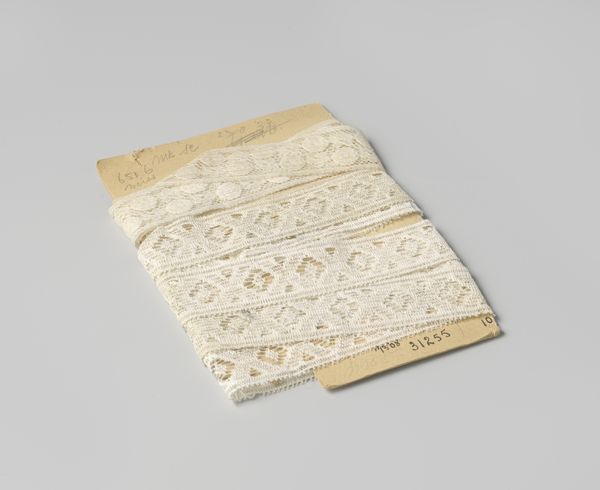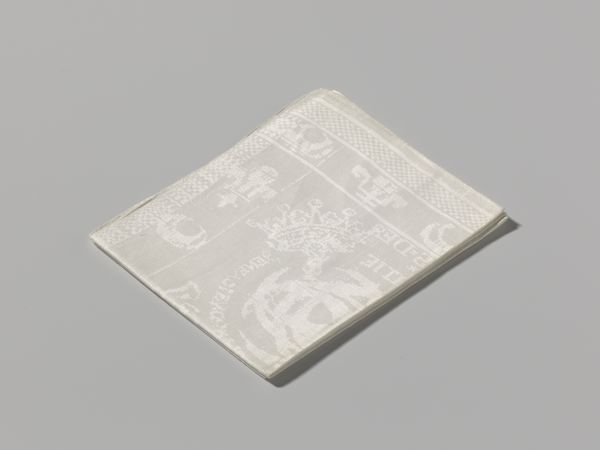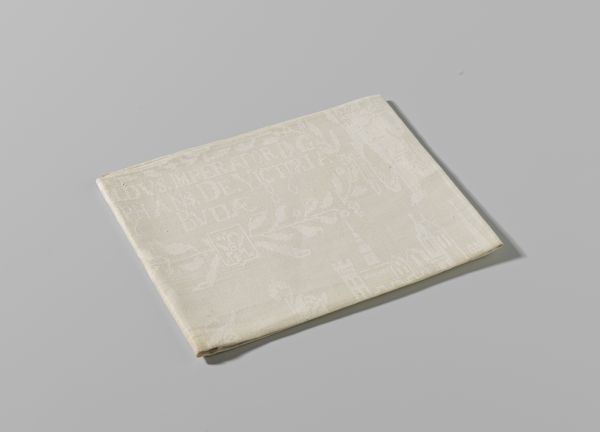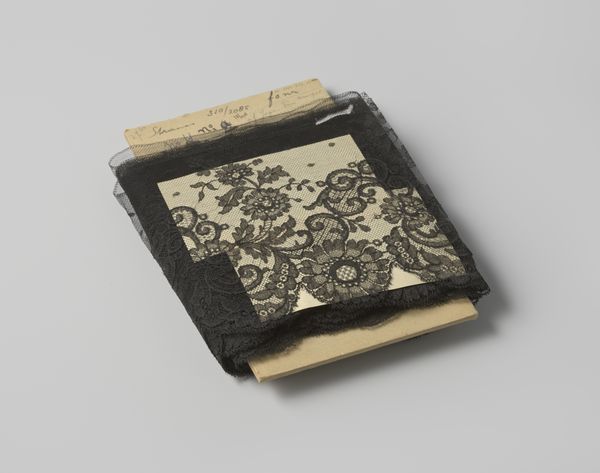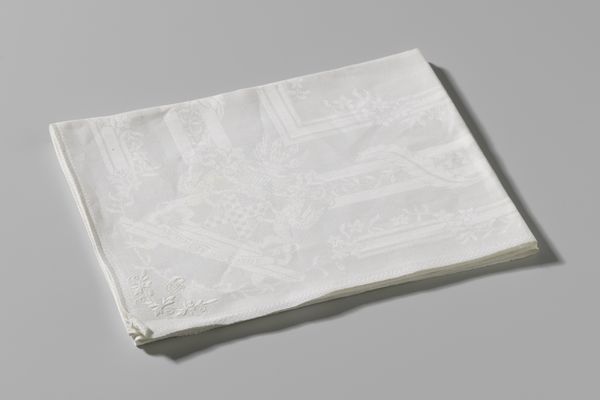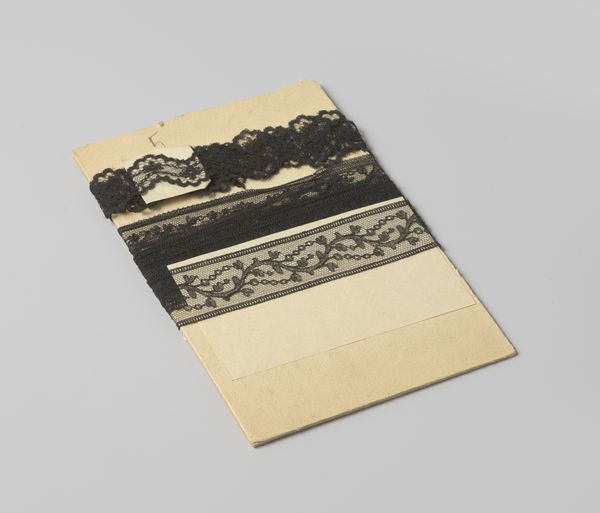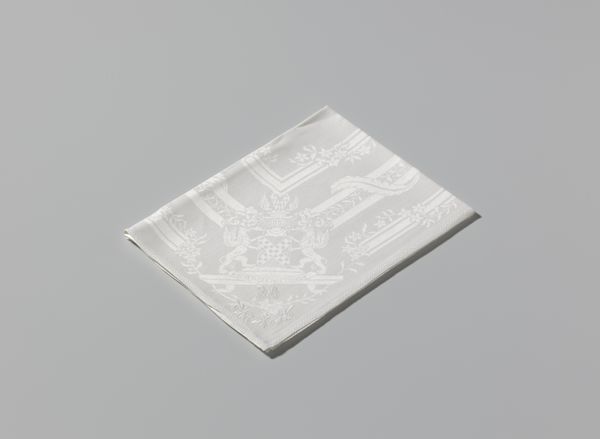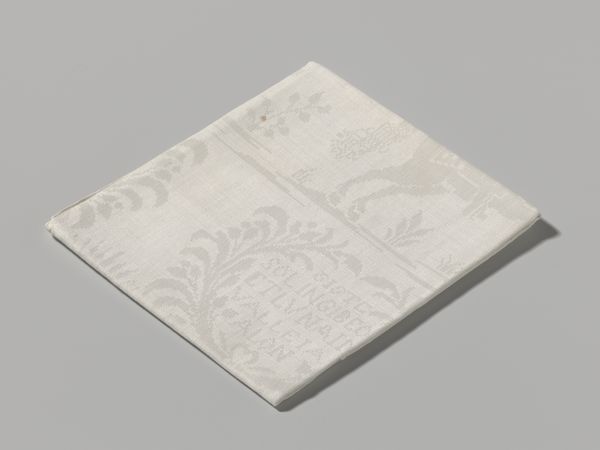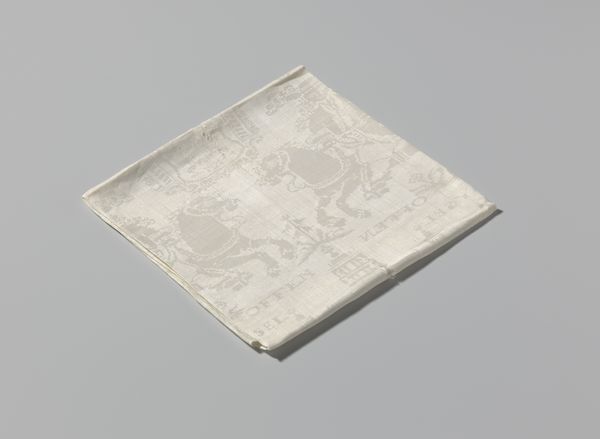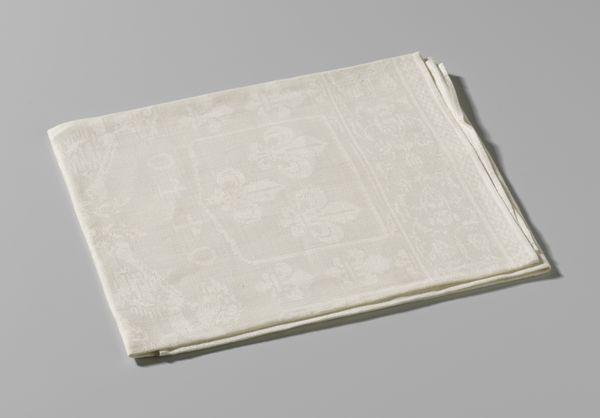
Tussenzetsel van roomwitte machinale kant met patroon van aaneengeschakeld klaverblad, op karton c. 1925
0:00
0:00
gustavschnitzler
Rijksmuseum
textile, cotton
#
textile
#
geometric
#
cotton
#
decorative-art
Dimensions: width 4.3 cm, width 18 cm, length 27 cm
Copyright: Rijks Museum: Open Domain
This sample of machine-made lace, likely produced in the late 19th or early 20th century, presents a cloverleaf pattern in cream-white thread. Unlike handmade lace, which is produced using bobbins or needles, machine lace is woven on a loom. This allows for much faster production and greatly reduces the amount of handwork involved. The result is a far more affordable product, accessible to a wider market. The regularity of the pattern, along with the uniformity of the thread, speaks to the precision of the machine-made process. The lace retains a delicacy, with a visual lightness that belies its industrial origins. This sample reminds us that even the most seemingly delicate of objects can be born of mass production, raising interesting questions about value, labor, and the changing landscape of craft in the modern era.
Comments
No comments
Be the first to comment and join the conversation on the ultimate creative platform.
